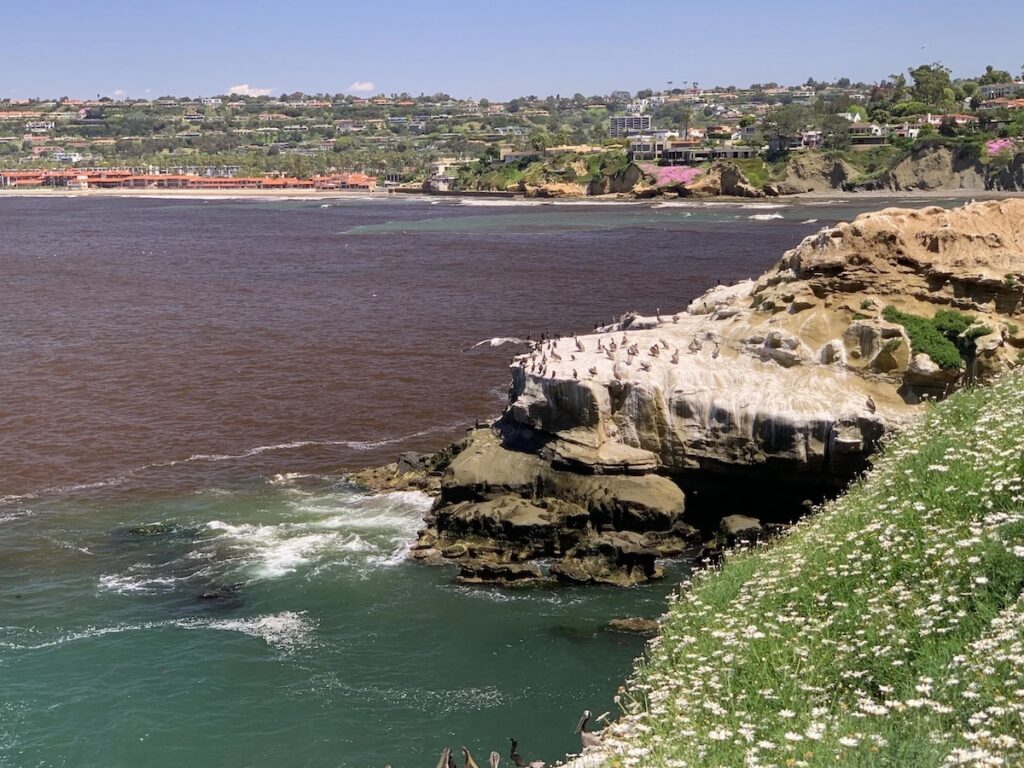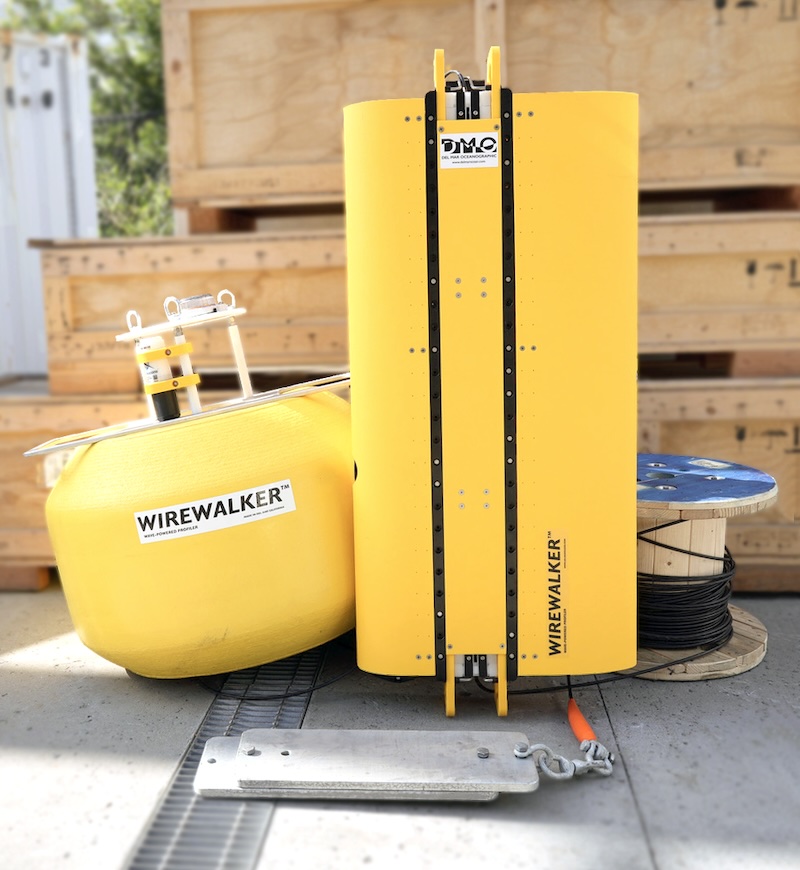
Del Mar Oceanographic’s Wirewalker wave-powered vertical profiling platform played a central role in a 2020 study examining the mechanisms behind the formation of dense harmful algal blooms (HABs).
The research, conducted by the Scripps Institution of Oceanography and Woods Hole Oceanographic Institution, explored how motile dinoflagellates achieve extremely high concentrations in the marine environment, an issue of growing ecological and economic concern worldwide.
Harmful algal blooms, composed of microscopic single-celled organisms, can develop to remarkable densities, but the biological and physical drivers of this process remain incompletely understood. More than five decades ago, scientists proposed that motile dinoflagellates could use vertical swimming to access deep nutrients and then return to the surface for photosynthesis, providing a competitive advantage over non-motile phytoplankton. The 2020 deployment of the Wirewalker enabled this long-standing hypothesis to be tested in detail.
During the study, a Wirewalker mooring equipped with an integrated suite of oceanographic sensors collected continuous, high-resolution data over a two-week period off San Diego, California. The platform provided full-depth profiles to 100 meters, with measurements obtained at 1-meter vertical resolution every 15 minutes. This sampling frequency was determined by the Seabird SUNA V2 nitrate analyzer’s one-second sampling rate and the Wirewalker’s vertical profiling speed.
The payload configuration included:
- RBRconcerto CTD (conductivity, temperature, and depth)
- Seabird Scientific ECO Triplet (chlorophyll-a fluorescence and optical backscatter)
- Seabird OCR-504 (multispectral irradiance)
- Seabird SUNA V2 (in situ nitrate concentration)
These instruments collectively measured hydrographic properties, bio-optical characteristics, nutrient distributions, and light availability, producing a comprehensive picture of the physical and biological environment associated with the bloom.
Data from the Wirewalker revealed clear diel migration patterns. At night, dinoflagellates descended into deeper, nitrate-rich layers, while during daylight they returned to the surface to photosynthesize. The study observed that decreases in deep-water nutrient concentrations corresponded closely with increases in organism abundance, directly linking vertical migration behavior with nutrient uptake and bloom development. The findings confirmed that diel vertical migration is a fundamental mechanism driving the formation of dense dinoflagellate HABs.
About the Wirewalker
 The Wirewalker is a mechanically driven vertical profiling system powered entirely by wave motion, requiring no external propulsion. Batteries are used solely to operate the onboard sensors. Its wave-actuated mechanism enables continuous, autonomous profiling over extended periods, providing detailed temporal and vertical data that are often unattainable with traditional ship-based sampling.
The Wirewalker is a mechanically driven vertical profiling system powered entirely by wave motion, requiring no external propulsion. Batteries are used solely to operate the onboard sensors. Its wave-actuated mechanism enables continuous, autonomous profiling over extended periods, providing detailed temporal and vertical data that are often unattainable with traditional ship-based sampling.
Designed to operate effectively in a wide range of conditions, from short-period wind chop to large storm waves, the system delivers reliable performance across varied sea states. Its modular design allows users to integrate custom sensor suites, supporting research in physical, chemical, and biological oceanography.
Through this deployment, Del Mar Oceanographic’s Wirewalker platform demonstrated its capability for sustained, high-resolution monitoring of dynamic marine processes, contributing to a deeper understanding of the biological and physical interactions underlying harmful algal bloom development.
For more information view the case study here >>











